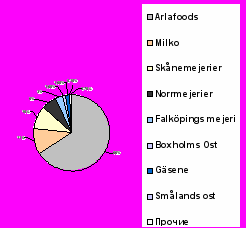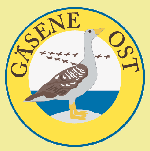Агропромышленный комплекс России: внешнеэкономические связи Издается при поддержке Национального союза экспортеров продовольствия AgRus
| Вид материала | Документы |
- Агропромышленный комплекс России: внешнеэкономические связи Издается при поддержке, 626.67kb.
- Об антикризисной поддержке экспортеров продовольствия, 38.39kb.
- Пресс-релиз международные форумы «мясная индустрия 2007», 54.42kb.
- Примерная программа наименование дисциплины Внешнеэкономические связи организаций апк, 282.61kb.
- Э. Э. Джусоева аспирантка виу внешнеэкономические связи региона всовременных условиях, 58.97kb.
- Социальный конфликт научно-практический журнал, 1318.28kb.
- Урок географии в 9 классе по теме: «Агропромышленный комплекс России. Его состав, 92.42kb.
- Итоги работы региональных отделений Союза работа по привлечению в члены Союза юридических, 721.15kb.
- Агропромышленный комплекс современной России: проблемы и перспективы Традиции развития, 37.54kb.
- М, что внешнеэкономические связи практически во всех странах мира определяют экономическое, 225.18kb.
Danish Diary Industry 2009 and the Cheese Segment
Denmark in comparison to other European countries is rather small. One of its main industries is agriculture. Being an agricultural country Denmark produces mainly animal products, such as meat and milk. During the last years more and more attention is paid to ecology aspect, because the Danish producers and customers become more and more concerned of the environment and nature. As any country Denmark is interested in high quality of its agricultural products on all levels.
Compared to Russia the number of cows in Denmark is much lower (656 thousand cows in Denmark and 9,3 million cows in Russia). But though the tendency in both countries is the same to the reduction of number of cows, Denmark is much more successive in it. For the last 30 years the number of cows in Denmark has been halved. At the same time the milk production was doubled, from 4 952 kg/cow per year in 1975 to 8 919 kg/cow in 2007. In 2007 the milk yield in Russia was 3 400 kg/cow per year. That is almost three times less than in Denmark. Although as a whole Russia produces much more milk than Denmark (4,5 thousand tonnes in Denmark in 2007 and 31,6 thousand tonnes in Russia in 2007).
In Denmark, as in the Whole Europe, more and more attention is given to the production of organic food. The production of organic milk in Denmark was started in 1990 and now it reached almost 10 % from the whole milk production. The production of organic food has a great potential not only in Denmark or in Europe, but in all countries of the world, as more and more people think of the quality of the products they eat and drink.
Talking about the consumer demands, the most popular organic milk product in Denmark is skimmed milk (more than 80 thousand tonnes of organic skimmed milk were produced in 2006), the second place is given to organic semi-skimmed milk (about 30 thousand tonnes). There are also produced organic whole milk, cultured products, cheese, cream and butter. The tendency of the last 5 years has shown the stability of this consumer demands, and it can be definitely said that the picture won’t change at least during the next few years.
As for the price policy, for the last 30 years the price per litre has raised considerably. If in 1975 the prise for milk for consumers was twice higher than the price of the product on farmer level (the cost for farmer used to be 7 DKK (DKK =1,6 RUR), and prise for consumers 14 DKK), in the 2007 the price on the farmer level is about 15 DKK per litre and consumers pay about 47 DKK per litre of milk. It means that today consumers pay three times more than the price on the level of production.
Danish producers and consumer are highly concerned about the quality of the product at all levels of production. The first level is the level of farming. The four main factors for quality at farms are the following: first of all it is the milk content, then goes safety in products, animal welfare is a very important factor, and finally the environmental protection is also a high priority. The main aim of the producers is to match milk content with consumer needs and expectations. Therefore milk shall have a natural content of fat, protein minerals and other basic substances, and milk shall have a good and fresh taste.
Consumers have to feel safe, buying milk products based on natural milk from farms. It means that milk shall be free of any dangerous substances and that the hygiene has to be in the top to avoid sickness among consumers and in the herd. This factor is directly connected with the next factor, that is animal welfare.
Animal health and welfare shall be based on respect for physiological and natural behaviour of the animals. Therefore animals shall be healthy, and the superior attention has to be paid to the physical conditions and management of animals, the way how they are treated, and their cleanness and living conditions.
The final factor of the quality of products at the farm level is the environmental protection that is that the farm production has to be environment friendly and respect the nature. Thus the farm shall take care of the surrounding environment and landscape, take care of the cleanness of it territory and bordering lands. The farm shall also optimise utilisation of nutrients and work to reduce the consumption of chemicals used for the production.
The next step of quality control is made on the level of dairy. The system of control on this level consists of two parts: self controlling system, that is producer’s responsibility, and also this system is controlled by public control system – Danish Food and Veterinary Service. The elements of control are the content of fat and protein, taste, pH, etc. These elements are controlled for each lot on arrival to diary. In the production it is controlled if the processes are running according to standards (again including pH, taste, consistence, etc.). Cheese is also measured by the culture in use. Then there is made sampling for post controlling of products in terms of its performance, taste, smell, consistence, etc. The samples shall be kept in the guarantied lifetime of the product.
Thus on the level of consumer there is full guarantee of high quality of each milk product. This quality is highly reliable, because it is controlled on all levels of production, both on the farm level ad on the dairy level.
Let us now touch upon the history of diaries in Denmark. The first diaries appeared in 1882. Till 1930 there existed only cooperative dairies and their number had increased rapidly from 3 to 1388 during less than 50 years. In 1930 the total number of dairies was 1685, and 297 of them were private dairies. The biggest number of dairies was reached after 5 years, in 1935, then there were 1404 of cooperative dairies, 307 of private dairies, that was 1711 diaries in total. After 1935 the number of dairies started to decrease, and in 1965 the total number was less than one thousand – 993 (814 cooperative and 179 private), and after 20 years the number was less than 100 (57 cooperative dairies, 29 private dairies – 86 in total). At the moment there are 24 dairies in Denmark, and the number of private (11) is almost the same as the number of cooperative (13).
Regarding the structure of cheese production, in Denmark there are 25 cheese producing enterprises. 10 of them are cooperative dairies and 15 are private. These 25 enterprises consist of 45 processing plants: 16 of them produce less than 1,000 tons of cheese a year (that is 1,1% of all the production), 15 of them produce between 1,000 and 6,000 tons a year (14,9% of all the production), and 14 plants produce more than 6,000 tons of cheese a year (84% of the total production). Cooperative dairies produce almost 10 times more cheese than the private ones: 314,500 tons vs. 36,100 tons, and it means that the share of private sector is not that considerable in the Danish production.
Though the number of cheese dairies is not that big the amount of cheese production grows constantly. Denmark started to produce cheese in 1925. In 1930 there was produced 27 thousand tons of cheese, and at the same time the amount of produced butter in the same year was 7 times more – 190 thousand tons. Since that year cheese has started to become more and more popular, and with butter it was the other was the other way round. Thus in 2005 there was produced 44 thousand tons of butter, and 355 thousand tons of cheese (8 times more than butter). As a result from Lurpak – the famous Danish butter Denmark came to different kinds of cheese of different producers, Arla being the most popular one.
The bigger part of production is cheese with medium fat content. In 2007 there was produced 224,700 tons of cheese with fat content from 30 to 55 fdb. On the second place there is cheese with fat content over 55 fdb - 97,300 tons, and the last one is cheese with low fat content from 0 to 30 fdb – 28,600 tons.
As for classification of cheese, the most popular one is semi-hard cheese. In 2007 there was produced 174,600 tons of this type of cheese. The next is soft cheese (80,100 tons), the third is fresh cheese (71,700 tons a year), then are semi-soft cheese (12,600 tons) and hard cheese (11,600 tons).
In Denmark there are popular special types of cheese, and it can be said that the tastes have slightly changed for the last 10-12 years. The most favourite cheese is still Danbo, but its production had risen considerably from 36,300 tons in 1997 to 48,900 tons in 2007. The situation with the second popular moulded cheese is the other way round: 30,000 tons produced in 1997 had decreased to 20,400 tons in 2007. The production of other cheeses hadn’t almost changed: there were produced 21,400 tons of semi-hard ripened cheese and Havarti in 2007, and 9,100tons of Esrom.
Denmark not only produces but also exports cheese and imports it. The better part of export countries are the countries of the European Union – it was 161,800 tons in 1997 and had raised to 209,200 tons in 2007. Denmark also exports cheese to the countries of Middle East (35,800 in 1997 and 13,100 tons in 2007), Asia (15,800 tons in 1997 and 12,100 in 2007), North America (13,400 tons in 1997 and 14,900 tons in 2007) and others. The total export had increased from 247,800 tons in 1997 to 269,600 tons in 2007.
At the same time Denmark had also raised import of cheese from 34,319 tons in 1997 to 77,538 tons in 2007. The most part of imported cheese is produced in the countries of the EU, such as Germany, France, Sweden and Netherlands.
The main Danish cheese exporters are Arla, Løgismose, Thise Mejeri, Lactosan, Naturmælk, Mammen Ost, Them Ost, St. Clemens and Cremo Ingredients A/S. These companies are known not only in Denmark, but also in the better part of Europe, and some of them are known in Russia. Arla and 3 other companies: Danisco, Novozymes and Chr. Hansen also export ingredients for cheese.
If you need more information – please contact:
Trade Council of Denmark
Danish Embassy Moscow
Phone: 8 (495) 642-68-00
E-mail: mowamb@um.dk
ОБЗОР АМЕРИКАНСКОЙ ИНДУСТРИИ
ПО ПРОИЗВОДСТВУ СЫРА
Михаил Максименко,
Специалист по вопросам сельского хозяйства
Посольства США
Не секрет, что объем производства молока в Соединенных Штатах Америки самый крупный среди всех стран мира. Только в 2007 году надои составили 81,7 млрд. литров.
Из этого объема молочная отрасль США производит широкий спектр высококачественной молочной продукции, как для внутреннего рынка, так и для экспорта.
Производимое молоко используется следующим образом, (в % от общего объема молока):
Жидкие молочные продукты - 26%
Сыр – 23%
Сыворотка – 10%
Сухое молоко -7 %
Другие сухие добавки -7%
Замороженные молочные продукты – 6%
Масло – 5%
Йогурты – 2%
Другие виды продуктов – 13%
На сегодняшний день производители США предлагают более 400 видов сыра, с общим объемом производства около 4.5 миллионов тонн в год, что позволяет США вот уже на протяжении многих лет оставаться самым крупным производителем сыра в мире с долей в 25% из общемирового производственного объема.
Наибольшие объемы в общем производстве сыра сыров занимают Моцарелла и Чеддар по 1/3 от всех произведенных сыров в Соединенных Штатах, ещё 1/3 падает на крем-сыры, значительное распространение также получили сыры итальянской и швейцарской рецептуры.
Все эти высококачественные сыры производятся по самым строгим международным санитарным стандартам, что гарантируется Министерством сельского хозяйства США.
Только в 2008 году из США было экспортировано 131.000 тонн сыра. В настоящее время основными рынками сбыта для американского сыра являются:
Южная Америка – 51%
Ближний Восток - 16%
Азия – 26%
Интересы Американских производителей сыра и молочной продукции представляет Совет США по Экспорту Молочной Продукции (USDEC).
Данная ассоциация была основана в 1995 году и объединяет 86 членов (производителей, торговых организаций, экспортеров и импортеров), которые представляют 90% всей молочной отрасли Соединенных Штатов.
USDEC имеет свои представительства в 14 странах мира, включая и Россию.
Узнать больше обо всем многообразии производимых в США сыров, а также найти подходящих поставщиков и производителей можно на сайте ассоциации: www.usdec.org
U.S.CHEESE INDUSTRY OVERVIEW
It is not a secret that the volume of milk output in the United States of America is the largest in the world. Only in 2007 the total U.S. milk production was 81.7 billion liters. From this huge volume the U.S. dairy processors produce a broad spectrum of high-quality dairy products, both for the local market and for export.
The U.S. milk is utilized as follows:
Fluid milk products -26 % from the total milk produced in the USA
Cheese – 23%
Whey – 10%
Milk Powder -7 %
NFDM/SMP -7%
Other Dry Ingredients – 6%
Butter – 5%
Yoghurts – 2%
Other products and uses – 13%
Today the U.S. Cheese producers offer more than 400 kinds of cheese, with a total annual production of 4.5 million tons that allows the USA to remain the largest cheese producer in the world with 25 % market share.
1/3 of all the cheese made in the United States is Mozzarella,
1/3 – Cheddar
And the remaining 1/3 includes cream-cheese, Italian – style cheeses and Swiss-type cheeses.
All these high-quality cheese products are made according to the strictest sanitary standards in the world that are guaranteed by the US Department of Agriculture.
The U.S. cheese export volume has totaled to the amount of 131.000 MT in 2008.
Right now the largest export markets for the US cheese are:
South America – 51%
Middle East - 16%
Asia – 26%
The interests of the US Cheese and Dairy producers are represented by the US Dairy Export Council (USDEC). This association was founded in 1995 and as of today unites 86 members (the biggest producers, exporters, traders and importers of US dairy products) that represent 90 % of all US milk production. USDEC has representative offices in 14 countries of the world, including Russia.
In order to learn more about the cheese varieties produced in the USA, and to find US Cheese suppliers or producers please visit the website of the association: www.usdec.org
Экспорт сыра из Германии в Россию
Д-р Эвальд Эверинг,
Генеральный директор компании «РУС МАРКЕТИНГ ГмбХ»
См. презентацию 3.
Шведский сыр в Швеции и в мире
Андреас Нильссон, Анна Кальченко,
Консультанты Шведского Торгового Совета
Шведский Торговый Совет
Шведский Торговый Совет содействует увеличению экспорта из Швеции и действует в интересах шведской промышленности и Правительства Швеции. Наши офисы расположены в более чем 50 странах, мы тесно сотрудничаем с торгово-промышленными ассоциациями, посольствами, консульствами и торговыми палатами по всему миру.
Шведский Торговый Совет помогает шведским компаниям развиваться на международных рынках. Наряду с оказанием консалтинговых услуг для шведских компаний, Шведский Торговый Совет организовывает двухсторонние мероприятия: семинары, выставки, делегации и встречи.
Шведский Торговый Совет в Москве успешно провел несколько проектов в области пищевой промышленности, как, например, недели шведских продуктов, организованные совместно с розничной сетью «Седьмой континент» в 2007 и 2008 годах. В 2008 году 10 крупных шведских производителей продуктов питания приняли участие в акции, включавшей в себя презентации и дегустации продуктов, а также прочие маркетинговые мероприятия.
Производство шведского сыра
В Швеции находится около 30 молочных заводов, 13 из которых принадлежат 8 крупнейшим предприятиям и занимаются производством сыра. На их долю приходится более 99% шведского производства сыра. Общий объем производства сыра в 2008 году достиг 114 200 тонн. Доля экспорта в производстве достаточно невелика и составляет около 20%.
Доли рынка 8 крупнейших производителей в сегменте твердых сыров
Помимо 8 крупнейших компаний, существует еще более 100 мелких фермерских хозяйств, производящих сыр. Однако на их долю приходится очень малая часть производства.
Шведы любят твердые сыры
В
 Швеции потребление сыра на душу населения увеличивается. Согласно международной статистике, в 2006 году от показатель достиг 18,5 кг в
Швеции потребление сыра на душу населения увеличивается. Согласно международной статистике, в 2006 году от показатель достиг 18,5 кг в год, что позволило Швеции занять седьмое место по уровню потребления сыра в Европе.
Потребление сыра в Швеции выросло на 2 кг на душу населения – от 16,3 кг в 1997 году до 18,5 кг в 2006 году. Из 18,5 кг сыра, которые среднестатистический швед съедает за год, 13 кг приходится на твердый сыр, это в большей степени шведский твердый сыр.
Потребление сыра в Швеции, кг на душу населения
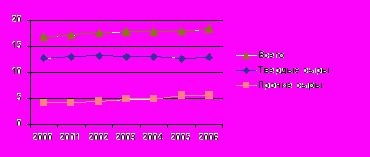
Исследование, проводившееся аналитической компанией United Minds в 2007 году, показало, что шведы чаще всего едят сыр как часть бутербродов. В ходе этого же исследования, сыр получил наивысшую оценку вкуса в качестве добавки к бутерброду. Половина опрошенных ответила, что они едят на завтрак бутерброды с сыром каждый день.
Наиболее популярные шведские твердые сыры
G
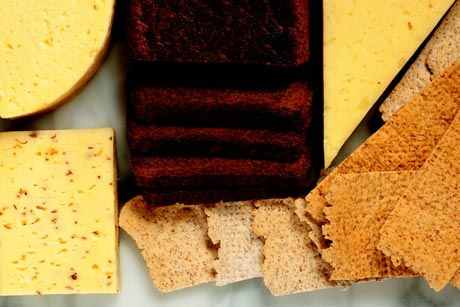 revé® (Греве), Herrgård® (Херргорд), Präst® (Прэст), Svecia (Швеция), Hushållsost (Хусхоллсуст) и Västerbottenost (Вэстерботтенуст) - шесть наиболее популярных шведских сортов твердых сыров. Эти сыры (кроме Västerbottenost) производятся сразу в нескольких местах, более чем одним производителем. Herrgård®, Präst®, Grevé® и Västerbottenost® - это зарегистрированные товарные знаки.
revé® (Греве), Herrgård® (Херргорд), Präst® (Прэст), Svecia (Швеция), Hushållsost (Хусхоллсуст) и Västerbottenost (Вэстерботтенуст) - шесть наиболее популярных шведских сортов твердых сыров. Эти сыры (кроме Västerbottenost) производятся сразу в нескольких местах, более чем одним производителем. Herrgård®, Präst®, Grevé® и Västerbottenost® - это зарегистрированные товарные знаки.История сыра Herrgård® началась в 1786 в замке Марвинсхольм (Marsvinsholm) на юге Швеции. При создании сыра в качестве образца был взят швейцарский сыр эмменталь. Вкус сыра Herrgård® характеризуется тонким и четким ореховым привкусом.
Сыр Präst® - это гордость регионов Смолэнд (Småländ) и Cконэ (Skåne) южной Швеции. В 18-ом веке этот сыр считался лучшим и даже использовался для уплаты церковного налога. Сегодня же, благодаря своему резкому вкусу, он часто используется при приготовлении еды.
Сыр Grevé® был создан достаточно поздно – в 1964 году. Однако этот сыр, обладающий характерным – ореховым, слегка сладковатым – вкусом, прекрасно вписался в классическую шведскую коллекцию сыров.
Сыр Svecia, отличающийся свежим и сочным деревенским вкусом, ведет свою историю с 13-го века. Svecia, что переводится с латыни как Швеция, по-прежнему производится по своему первоначальному рецепту. Сыру Svecia было присуждено имя национального продукта (продукта, который несет в себе качество места, где его производят).
С
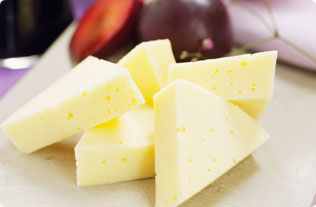 ыр Hushållsost получил свое название в конце 19-го века. Этот сыр обладает уникальным сроком созревания и ароматом. Сыр защищен европейским знаком «TSG» (Traditional Speciality Guaranteed).
ыр Hushållsost получил свое название в конце 19-го века. Этот сыр обладает уникальным сроком созревания и ароматом. Сыр защищен европейским знаком «TSG» (Traditional Speciality Guaranteed).Сыр Västerbottenost® был впервые произведен в 1872 году по ошибке, когда молочница Ульрика Элеонора Линдстрём отвлеклась на заигрывания разносчика молока и перестала следить за временем приготовления сыра. Этот сыр легко распознать по резкому, сладко-горькому вкусу.
Существует, конечно же, большое количество других шведских твердых сыров, помимо названных.
Когда дело касается выбора сыра, то сыр Hushållsost является самым покупаемым шведским твердым сыром.
Потребление самых популярных шведских сыров в 2006, тысячи тонн
| Hushållsost | | 16,7 |
| Präst® | | 13,2 |
| Herrgård® | | 10,5 |
| Grevé® | | 7,5 |
Экспорт шведских сыров и перспективы на российском рынке
В 2007 году объем экспорта шведских сыров достиг 71 миллионов евро за 19 тысяч тонн, на долю Финляндии и Дании пришлось почти 70% денежного выражения экспорта.
Россия в 2007 году импортировала 940 тонн шведского сыра на сумму 3,5 миллионов евро, что составило 5% денежного выражения экспорта сыра из Швеции.

